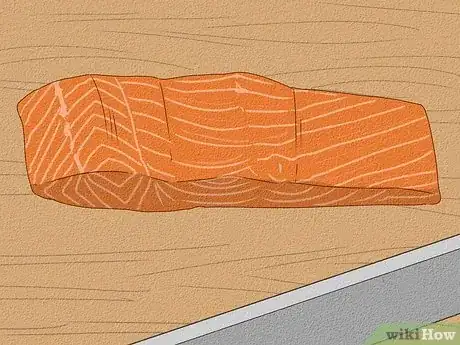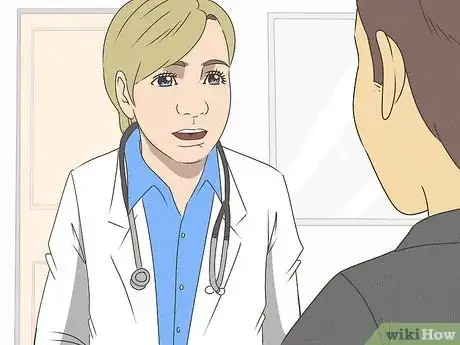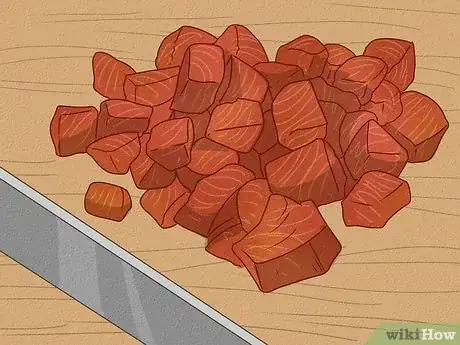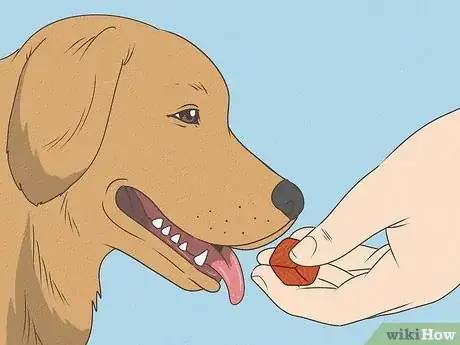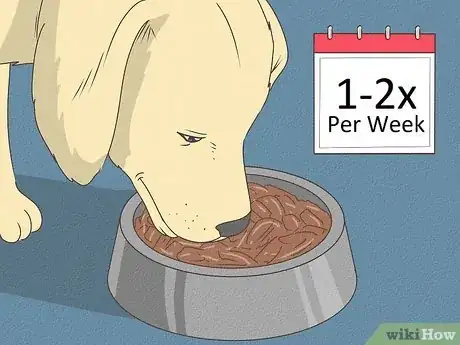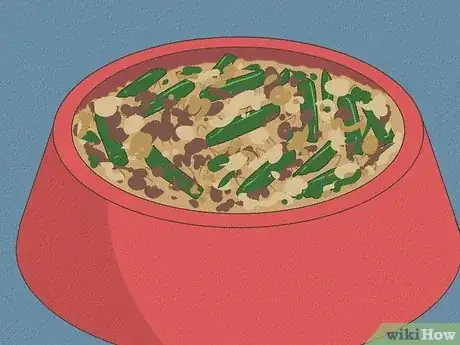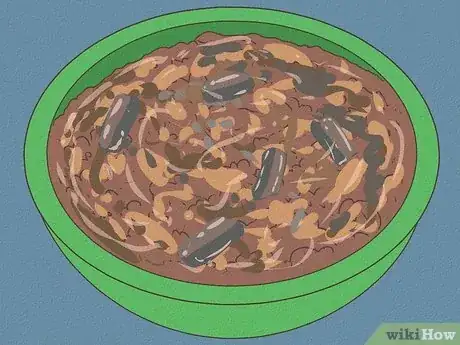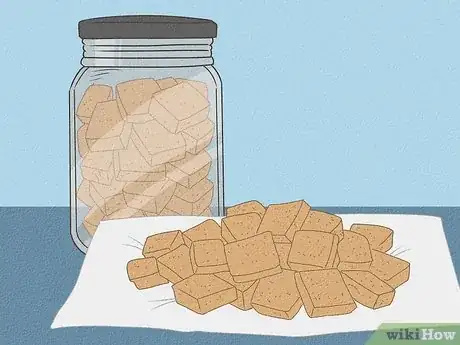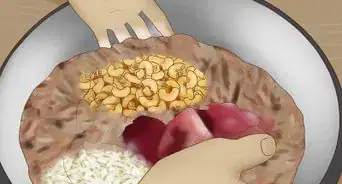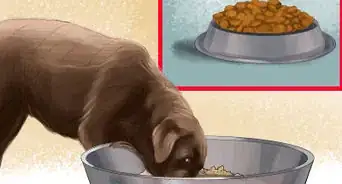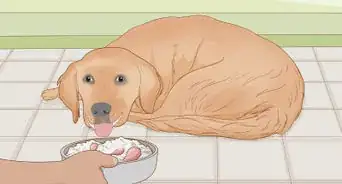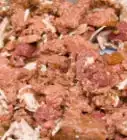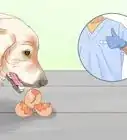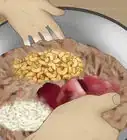This article was written by Beverly Ulbrich and by wikiHow staff writer, Hunter Rising. Beverly Ulbrich is a Dog Behaviorist and Trainer and the Founder of The Pooch Coach, a private dog training business based in the San Francisco Bay Area. She is a Certified CGC (Canine Good Citizen) Evaluator by the American Kennel Club and has served on the Board of Directors for the American Humane Association and Rocket Dog Rescue. She has been voted the best private dog trainer in the San Francisco Bay Area 4 times by SF Chronicle and by Bay Woof, and she has won 4 "Top Dog Blog" awards. She has also been featured on TV as a dog behavior expert. Beverly has over 18 years of dog behavior training experience and specializes in dog aggression and anxiety training. She has a Master of Business Administration from Santa Clara University and a BS from Rutgers University.
There are 11 references cited in this article, which can be found at the bottom of the page.
This article has been viewed 3,358 times.
Do you want to treat your dog to a delicious meal instead of their regular kibble? Salmon is packed full of nutrients that help your pup’s brain, joints, and immune system, and it’s so easy to prepare at home. Whether you want to give your dog some plain cooked salmon or mix it with other ingredients for a tasty treat, we’ve got everything you need to know. Keep reading to learn how to perk up your pup with homemade salmon dog food and treats!
This article is based on an interview with our dog behaviorist and trainer, Beverly Ulbrich, founder of The Pooch Coach. Check out the full interview here.
Things You Should Know
- Use boneless salmon filets or canned salmon in water to give to your dogs.
- Cook the salmon on the stove or in the oven until the meat is opaque and has an internal temperature of 145 °F (63 °C).
- Give your dog salmon once or twice a week as a treat, or mix it with rice, green beans, sweet potatoes, or broccoli to make homemade dog food.
Ingredients
Salmon and Green Bean Dog Food
- 1 pound (450 g) of salmon filet
- 3 tablespoons (44 ml) of sunflower oil
- 3 ½ cups (410 g) of sweet potatoes
- 2 ⅔ cups (410 g) of green beans
- 0.7 pounds (320 g) of rice
- 3 cups (410 g) of brown lentils
- 3 large eggs
- 2 tablespoons (11 g) of shredded parmesan cheese
Salmon and Broccoli Dog Food
- 1 pound (450 g) of salmon filet
- 3⁄4 pound (340 g) of sweet potato
- 2 cups (280 g) of cooked rice
- ¾ cup (53 g) of broccoli
- ½ cup (85 g) of canned sardines
- 1⁄4 pound (110 g) of ground beef liver
Salmon Dog Treats
- 2 cans of salmon
- 1 egg
- 2 cups (240 g) of whole wheat flour
Steps
Cooking Plain Salmon for Dogs
-
1Choose boneless salmon filets to cook for your dog. Pick the freshest fish available since it will be the healthiest for your dog. If you can’t find any boneless filets, be sure to pick out all of the bones before cooking the salmon. If your dog swallows fish bones, they could potentially harm your pup’s digestive system.[1]
- Alternatively, use canned salmon that’s packed in water. Avoid salmon canned in oil since it can be harmful to your pup.
-
2Skip the seasonings and oil. Spices like salt and pepper can irritate your pup’s stomach, so save them for filets you cook for yourself. Since oils add more fat to the salmon, avoid using them while you’re cooking so the meat isn’t too greasy for your dog.[2]
- Other seasonings like onions and garlic are toxic to dogs, so avoid using them.
Advertisement -
3Cook the salmon until the meat reaches 145 °F (63 °C). Any cooking method works to prepare the salmon as long as it reaches the proper temperature. Use your stove or oven to heat the fish until the meat looks opaque. Use a meat thermometer to check the internal temperature of your salmon at its thickest point to see if it’s ready to serve to your pup.[3]
- Bake your salmon in an oven at 350 °F (177 °C) for about 20 minutes.
- Sear salmon in a pan over high heat for about 3–4 minutes per side.
- Poach your salmon in a pot of simmering water for about 10 minutes to fully cook it through.
- Raw salmon may contain bacteria that causes loss of appetite, vomiting, diarrhea, or rapid weight loss, so always cook the fish fully before serving it to your dog.
Feeding Salmon to Your Dog
-
1Consult with a vet to determine how much salmon to give your dog. The amount of salmon you give your dog really depends on their breed, size, and activity level, so portions may vary. Reach out to your vet and let them know that you want to give your pup salmon as a meal or treat. The vet’s office will be able to recommend specifically how much food to give your dog so they get enough to eat without growing overweight.[4]
- While it may vary, a good rule of thumb is serving ½ cup (100 g) of food per 25 lb (11 kg) of your dog’s weight.
-
2Break the meat into small bite-sized chunks. Once your salmon is fully cooked, pull it apart with a fork or spatula into smaller pieces. While you’re breaking the meat down, check for any small bones that might have stuck in the meat and remove any that you find.[5]
- Even boneless salmon filets may have small pin-shaped bones, so always double-check to see if you find any.
-
3Give plain salmon to your dog as a quick treat. Whenever you’re making salmon for yourself, prepare a small filet for your pup too. Just give them the fish without any additives in a bowl so they can enjoy a healthy snack.[6]
- Dogs can eat cooked salmon skin, but it has more fat than the rest of the meat and could upset your pup’s stomach. If you want to stay on the safe side, just peel the skin off before giving it to your dog.
-
4Limit feeding your dog salmon to once or twice a week. Since salmon has a higher fat content than standard dog food and other proteins, only give it to your dog as a special meal or reward rather than for every meal.[7]
Salmon Dog Food & Treat Recipes
-
1Mix grains and veggies with the salmon to make nutritious dog food. After you cook your salmon, dice and pan-fry 3 ½ cups (410 g) of sweet potatoes until they’re softened. Toss 2 ⅔ cups (410 g) of green beans, 0.7 pounds (320 g) of cooked rice, and 3 cups (410 g) of brown lentils into the same pan and cook all the veggies and grains until they’re soft. Finally, crack in 3 eggs and stir the mixture in with the salmon until it’s thoroughly combined.[8]
- Keep the homemade food in your fridge for up to a week or in your freezer for up to 1 month.
- If you don’t have rice, use quinoa as a substitute.
- Stir a dog nutrient powder into the food to help add other helpful nutrients that are found in store-bought dog foods.
-
2Make a high-protein dog food with salmon, sardines, and beef liver. Cook the salmon through until the meat is completely opaque and to the correct temperature. Once the salmon is cooked, add ½ cup (85 g) of canned sardines and 1⁄4 pound (110 g) of ground beef liver to the pan. Add nutrients to the food by including 3⁄4 pound (340 g) of sweet potato, 2 cups (280 g) of cooked rice, and ¾ cup (53 g) of broccoli to the food.[9]
- Add a splash of bone broth to the salmon to help make the meat juicier and more enticing for your pup.
- Keep the homemade food in your fridge for up to 1 week, or in your freezer for up to a month. Just thaw a serving in your fridge overnight before giving it to your dog.
-
3Bake simple training treats with salmon, eggs, and flour. Blend 2 cans of salmon, 1 egg, and 2 cups (240 g) of whole wheat flour in a food processor until it has a dough-like texture. Pour the mixture onto a piece of parchment paper and roll it out with a rolling pin so it’s about 1⁄4–1⁄2 inch (0.64–1.27 cm) thick. Cut the dough into bite-sized squares and transfer the parchment paper to a cookie sheet. Bake the salmon in an oven preheated to 375 °F (191 °C) for 15 minutes.[10]
- Keep the treats in a sealed jar for up to 1 week at room temperature or freeze the treats for up to 1 month.
Warnings
- Avoid feeding your dog raw salmon since it could contain the parasite Neorickettsia helminthoeca, which can cause loss of appetite, vomiting, diarrhea, or rapid weight loss. If you notice that your dog has any of these symptoms, contact a vet right away.[11]⧼thumbs_response⧽
- If your dog tries to nip or bite at you when you take their food bowl away, contact a professional behaviorist to work through your pup’s food aggression.⧼thumbs_response⧽
References
- ↑ https://www.akc.org/expert-advice/nutrition/can-dogs-eat-salmon/
- ↑ https://www.akc.org/expert-advice/nutrition/human-foods-dogs-can-and-cant-eat/
- ↑ https://youtu.be/fzHZfAHwB8g?t=8
- ↑ https://www.akc.org/expert-advice/nutrition/best-dog-food-choosing-whats-right-for-your-dog/
- ↑ https://youtu.be/SIHG1ShsGaI?t=337
- ↑ https://www.akc.org/expert-advice/nutrition/can-dogs-eat-salmon/
- ↑ https://www.akc.org/expert-advice/nutrition/can-dogs-eat-salmon/
- ↑ https://youtu.be/fzHZfAHwB8g?t=5
- ↑ https://youtu.be/O5YJWgdAP30?t=8
